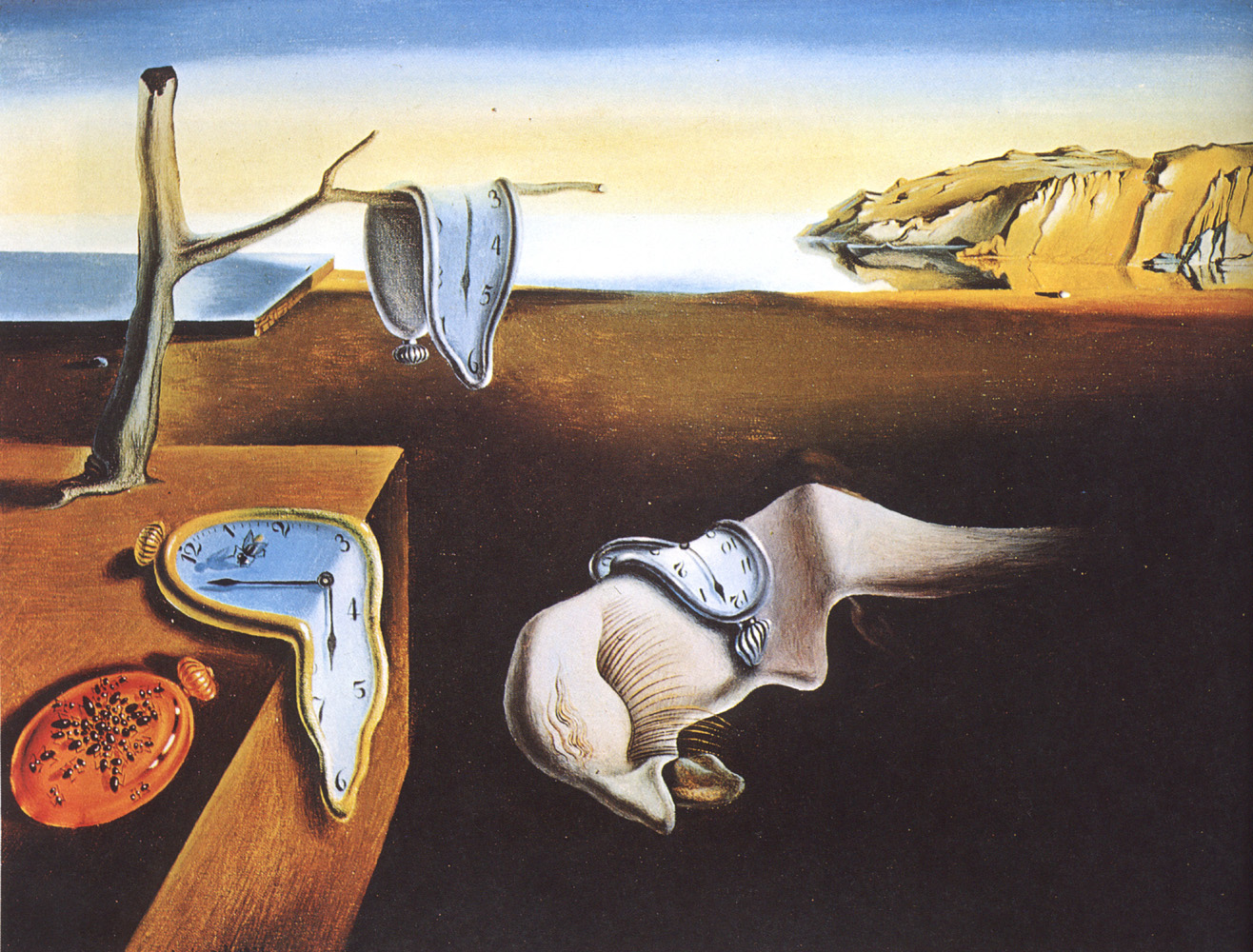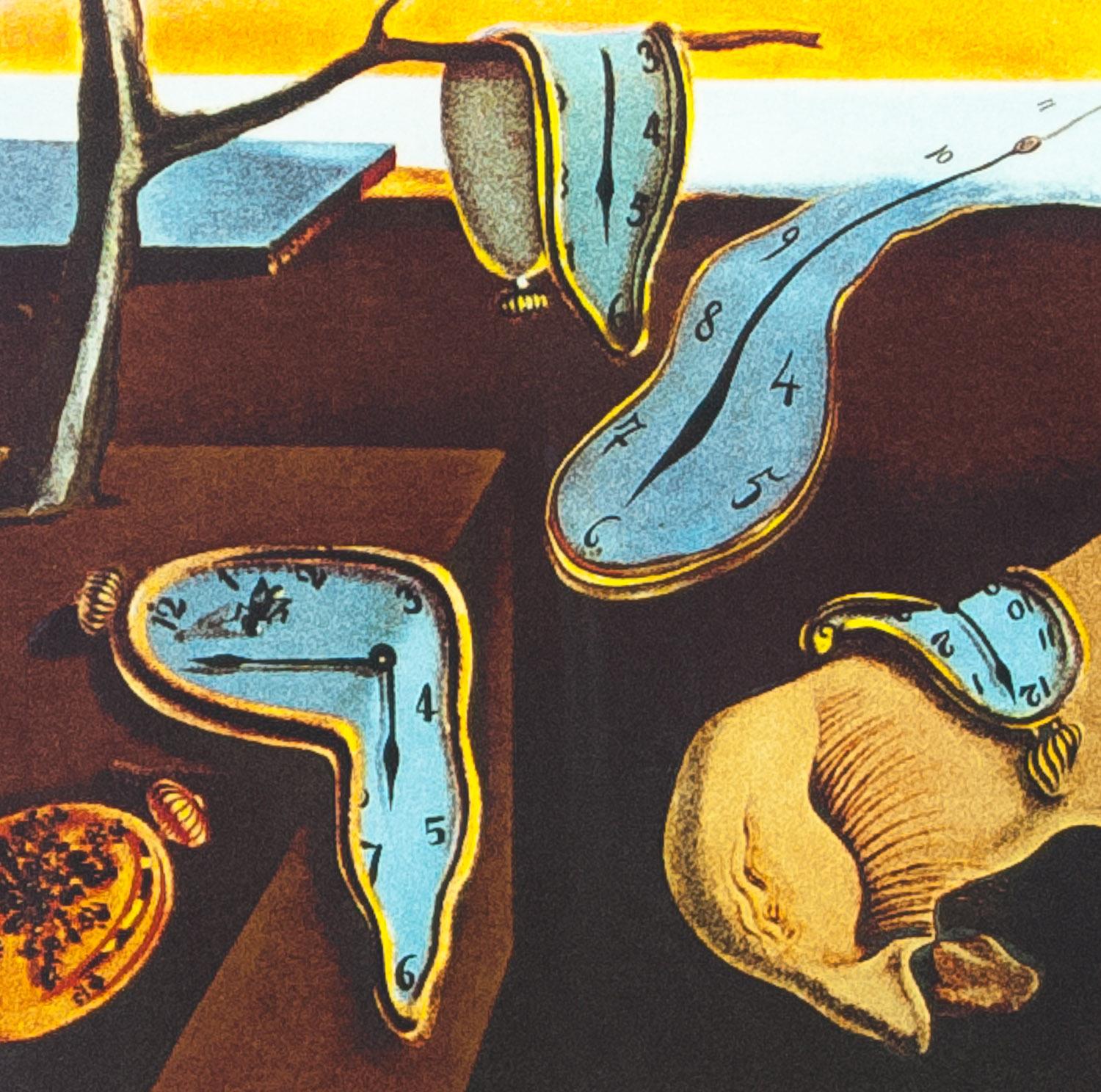
We are challenged because we believe that watches should be exquisitely crafted, precise mechanical objects which keep reliable and consistent time, but here we see them wilted and warped – how awful to think of a beautiful Patek Philippe ref. The Disintegration of the Persistence of Memoryįrom a horological perspective, what is most disturbing is undeniably the distorted form of the watches. Dalí – and Surrealism more broadly – sought to provoke, not to comfort. Is Dalí alluding to the warped perception of time that exists in our dreams? Or is he perhaps suggesting that the human invention of time is just as susceptible to decay as anything else that we construct? The work is decidedly enigmatic, but so too are our own dreams when try to decipher them upon waking up in the morning. A veritable swarm of ants – a symbol of deterioration which recurs throughout Dalí’s work – run across the only watch which has not yet come to resemble camembert melting in the sun. Many believe that the withered figure sprawled on the ground seemingly weighed down by the passage of time is in fact a contorted portrait of Dalí himself. Upon immediate impression, the viewer is confronted with a rather perturbed scene: melting pocket watches hang from trees branches and drape over obscure geometric forms, a vast and barren sea-scape stretches out to the distant Catalonia-inspired cliffs, a lifeless organic mass lays heaped on the sand. Portrait of Paul Eluardĭalí’s works from around the early 1930’s are considered to constitute the height of his artistic career, and it was in 1931 that Dalí completed ‘The Persistence of Memory’ – his most recognisable canvas. The legacy of Spanish art which Dalí inherited from the likes of Goya and Picasso was one defined by distress and troubled self-reflection, and so it is hardly surprising that the subject matter of Dalí’s oeuvre is itself somewhat disturbed. His impressions of dreams are no idyll of happiness and hazy frivolity – they often depict grotesque, nightmarish scenes. There is certainly something haunting and macabre about the work of Dalí. Others, like Dalí, would also aim to harness inspiration from their own unconsciousness – unadulterated truth and creativity supposedly flourished in the realm of one’s dreams.

Here, artists attempted to relinquish the constraints of reason and perceptions of aesthetic so that they may try to paint or write almost without thinking and without conscious intervention in the process. A term coined by the French writer and poet André Breton in his 1924 Surrealist Manifesto, Surrealism seeks to express ‘the real functioning of thought’ through submitting entirely to unconventional creative methods which included psychic automatism. Dalí is celebrated for his contribution to the movement of Surrealism – the art that represents what is sur (above) reality. To think of the name Salvador Dalí probably conjures three images: a wide-eyed and expressive face, and a curled moustache, and the melting clocks from ‘The Persistence of Memory’. Ultimately his departure from the traditional canon of art history was resolute, and one which he would maintain for the rest of his career. Following his departure from the academy, his paintings became increasingly unorthodox and verging on bizarre. Drawing was an early preoccupation of the talented young Dalí who spent a relatively comfortable childhood in the foothills of the Pyrenees before moving to Madrid in 1922 to study at the Real Academia de Bellas Artes de San Fernando – the prestigious art academy from which he was expelled after denouncing his examiners as incompetent. Come 1989 he would die in that same small Spanish city, but his exceptional creativity forged an art historical legacy that continues to resonate across the world today.

Just north of Barcelona where Catalonia borders southern France and touches the Balearic sea sits the town of Figueres where, in 1904, Salvador Dalí was born. Salvador Dalí’s ‘The Persistence of Memory’ is one of the most seminal works to emerge from the Surrealist movement and it explores one central motif: time. However, on the odd occasion, watchmaking can in fact end up on that gallery wall. A timepiece is not art in the same way that a canvas hangs on a gallery wall, but it is nonetheless artistic in its qualities as a demonstration of aesthetic excellence. But beautiful watches are also meticulously crafted objects whose designs can evoke place, era and memory.

Watches fundamentally tell the time, and so too may they function as a calendar or even tell you the local time in Melbourne when you are in London or Shanghai. Fine watchmaking is an art form with a distinctly practical bent.


 0 kommentar(er)
0 kommentar(er)
